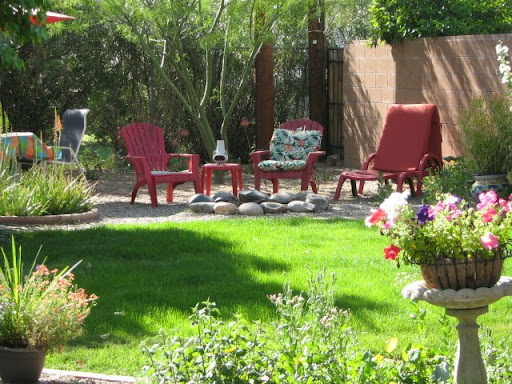
Sustainers of Life
In a Three Sisters planting, the three partners benefit one another. Corn provides support for beans. Beans, like other legumes, have bacteria living on their roots that help them absorb nitrogen from the air and convert it to a form that plants can use. (Corn, which requires a lot of nitrogen to grow, benefits most.) The large, prickly squash leaves shade the soil, preventing weed growth, and deter animal pests. The Three Sisters also complement each other nutritionally.
To the Iroquois people, corn, beans, and squash are the Three Sisters, the physical and spiritual sustainers of life. The three vegetables composed the main food supply of the Iroquois. These life-supporting plants were given to the people when all three miraculously sprouted from the body of Sky Woman's daughter, granting the gift of agriculture to the Iroquois.
The Iroquois agricultural system was based on the hill-planting method. The women, who were responsible for farming, placed several kernels of corn in a hole. As the small seedlings began to grow, the farmers returned periodically to mound the soil around the young plants, ultimately creating a hill one foot high and two feet wide. The hills were arranged in rows about one step apart.
Iroquois women mixed their crops, using a system called "interplanting." Two or three weeks after the corn was planted, the women returned to plant bean seeds in the same hills. The beans contributed nitrogen to the soil, and the cornstalks served as bean poles. Between the rows, the farmers cultivated a low-growing crop such as squash or pumpkins, the leaves of which shaded the ground, preserving moisture and inhibiting weed growth.
The Arizona version!
Three Sisters Gardens Should be Ready by Monsoon Rains
By early July, your Three Sisters Garden pits should be dug and filled with good compost, seeds should be in the ground waiting for the rains, and you should have straw ready to cover the soil once the seeds have sprouted. Consider planting other traditional crops, such as sunflowers or jerusalem artichokes (a tuberous perennial sunflower), around at the edge of the three sisters garden. Put them on the west side so they will shade your other plants during the heat of the late afternoon.
1. Plan and select a site. You'll want to plant your Three Sisters garden in a site that has direct sunshine for most of the day and access to water. Some afternoon shade is OK as the sun is so strong late in the day. Also having a water source nearby will make it easier to supplement the monsoon rains.
2. Prepare the soil. First, break up and rake the soil. Next, build a mound about 12 inches high and between 18 inches and 3 feet in diameter. Flatten the top of the mound and make a shallow depression to keep water from running off. The number of mounds you create depends on the size of your growing area. Mounds should be 3 to 4 feet apart in all directions.
3. Plant seeds. Soak four to seven corn seeds overnight and then plant them about 6 inches apart in the center of each mound. (You'll eventually thin to three or four seedlings.) Many Native people honor the tradition of giving thanks to the "Four Directions" by orienting the corn seeds to the north, south, east, and west. Also soak and then plant six pole bean seeds in a circle about 6 inches away from the corn. (You'll eventually thin to three or four bean seedlings.) At about the same time, plant four squash or pumpkin seeds next to the mound, about a foot away from the beans, eventually thinning to one. If you are planting a large area, you can also sow the squash in separate mounds (1 foot in diameter) between every few corn and bean mounds.
4. Maintaining your traditional garden. As corn plants grow, thin them out, weed gently around them and mound soil around the base of each stem for support. When the corn is knee-high and again when silks appear on the husks, "side-dress" by putting a high nitrogen fertilizer (such as aged manure or fish emulsion) on the soil surface near each plant. If beans aren't winding their way around the corn, help by moving tendrils to the stalks. (Keen observers may notice a pattern in the direction in which the bean vines wind.)
This concept of interplanting these seeds is known as companion planting. This is the concept behind the Three Sisters: put corns and beans and squash together and they help each other. Getting the right nutrients in the soil is essential to the success of any garden. These days we mostly rely on fertilizers to provide the right ‘food’ for plants.
But through companion planting, you can provide proper nutrients from one plant to another through the soil they share. In the three sisters, the beans, part of the legume family, take in unusable nitrogen from the air and produce excess, usable nitrogen to the soil for the corn and squash. But while beans are useful in many companion planting combinations, they are not good to plant around onions or garlic, which do not like the extra nitrogen. By using compost you are also adding nutrients and microorganisms to the soil which will act as a natural fertilizer as well.
So as you plant your own Monsoon Garden, think about our ancesters who planted in this method naturally. Consider that they were already 'green' and 'eco-friendly'. Today, we can learn a lot by following the simpler ways of our ancestors and the earth will benefit from it.
Happy Digging,
Doreen, The Garden Goddess
http://www.down2earthgardens.com/











